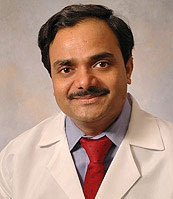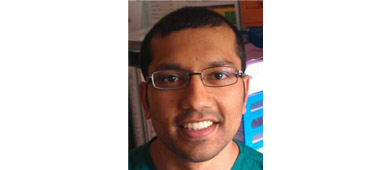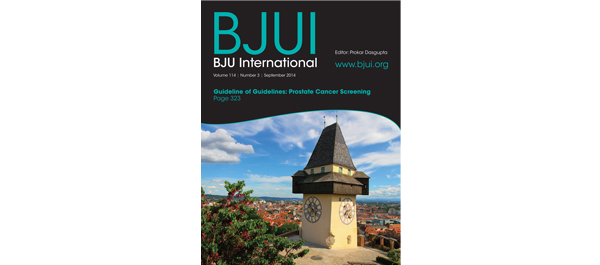
Editorial: Is surgery a never ending learning process?
The concept of the learning curve is one of the most important issues in surgery and also one of the most overlooked. In the present issue of BJUI, Abboudi et al. [1] present an interesting review paper evaluating the concept of the learning curve in urological procedures. Specifically, the authors have conducted a methodologically consistent systematic review on the literature focused on the learning curve of some urological procedures, including mainly radical prostatectomy (RP), robot-assisted…

Are You Teaming Up for Movember?
2 Comments
/
Urology, Social Media, and Prostate Cancer Controversies
The past couple of years have witnessed a rapid rise in the number of urologists engaging in conversation using social media. Urologists across the globe are now participating in the International Urology Journal Club on Twitter (#UROJC), tweeting at conferences, and using social media to build personal and professional relationships. As a result, providers with a passion for men’s health, who may never previously met in real…

Editorial: Patient-reported outcomes – a force for clinical improvement or another way for ‘big brother’ to survey clinicians?
In the 19th century Lord Kelvin wrote, ‘If you cannot measure it, you cannot improve it’. Since then clinical improvement has often been about measuring outcomes to determine what elements of healthcare are working well and what can be improved. The early studies of antisepsis and surgical technique had endpoints, which were measured by doctors deciding whether a wound infection, cancer recurrence or even death had occurred. These outcomes were usually discrete with little room for describing…

Editorial: Robot-assisted pyeloplasty in children
The authors of the study on robot-assisted pyeloplasty in this issue of BJUI have carried out an excellent review of the current data on this common paediatric urology procedure [1]. Although the analysis involves small case numbers and series for meta-analysis, the data are useful for current practice. It may be worth waiting another 5 years to review the data again, by which time the learning curve for most of the surgeons will be over, and a true representation of practice and a comparison…

Paediatric urology in the BJUI
The BJUI and the Editorial team are committed to the publication of high-quality and highly citable articles concerning translational science for the International Paediatric Urology Community. We encourage authors to submit original and outstanding work for publication that can influence clinical practice or introduce innovative new care methods for children across the world.
In addition to valuable contributions, the reviewers’excellent review process ensures the best publications. Although,…

Highlights from the Irish Society of Urology 2014
Failte go Cill Airne (Welcome to Killarney, Co Kerry).
The urology community of Ireland descended on the picturesque town of Killarney in the south west of Ireland for its annual scientific meeting.
Mr David Quinlan (@daithiquinlan), President of the ISU, commenced proceedings with a tribute to the late Professor John Fitzpatrick and Mr Dermot O’Flynn. It is the first ISU following the sad passing of Professor Fitzpatrick in May of this year. Professor Fitzpatrick led a distinguished…

Editorial: A call for the international adoption of penile specialist networks
The recent article by Tang et al. [1] from the Christie Hospital in Manchester raises an interesting question. The urological cancer plan for England and Wales specifies that review of the pathology of prostate and high-risk superficial bladder cancer should take place as part of the referral process for these cases to specialist pelvic cancer teams, but the penile pathway does not indicate that this is necessary [2]. The Royal College of Pathologists [3] also specifies the need for expert…

sLND for Prostate Cancer Nodal Recurrence: #urojc September 2014 summary
The September 2014 edition of the International Urology Journal Club (#urojc) returned to familiar territory - prostate cancer. In particular, the discussion focused on salvage lymph node dissection following radical prostatectomy. For the second time (first in July 2014), two journal articles were selected. Both were kindly made available to open access by The Journal of Urology (@JUrology).
The first paper from the Mayo Clinic by Karnes et al., titled ‘Salvage Lymph Node Dissection (sLND)…

Editorial: Perioperative aspirin: To give or not to give?
As the population ages and life expectancy increases, one may safely assume that more men will be diagnosed with diseases of the elderly such as prostate cancer. In the USA, it is estimated that the number of older adults (≥65 years old) will double between 2010 and 2030, contributing to a 45% increase in cancer incidence [1]. Also, it is likely that these older patients will present with multiple comorbidities, commonly described as ‘multimorbidity’ in the contemporary medical literature,…

15th Asia-Pacific Prostate Cancer Conference 2014
Blog author Dr Sarah Wilkinson enjoys lunchtime entertainment at APCC in Melbourne.
The 15th Asia-Pacific Prostate Cancer Conference 2014 (#apcc14; prostatecancerconference.org.au/) is the largest prostate cancer educational event in the region and attracts over 800 multidisciplinary delegates every year. The world’s leading experts in prostate cancer have featured on the Faculty at this conference in recent year’s and this year’s Faculty was again a great team-sheet for leaders in this…
